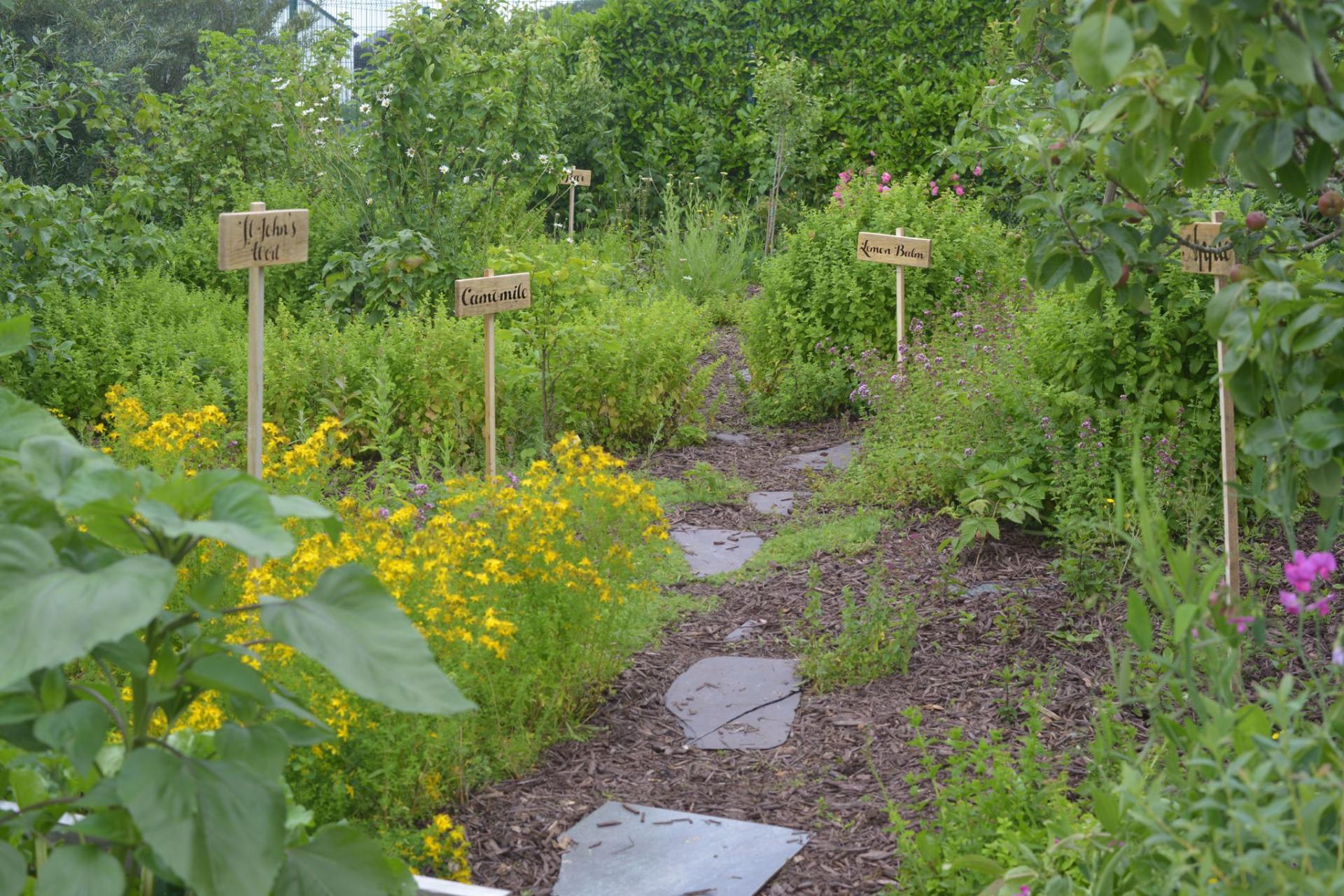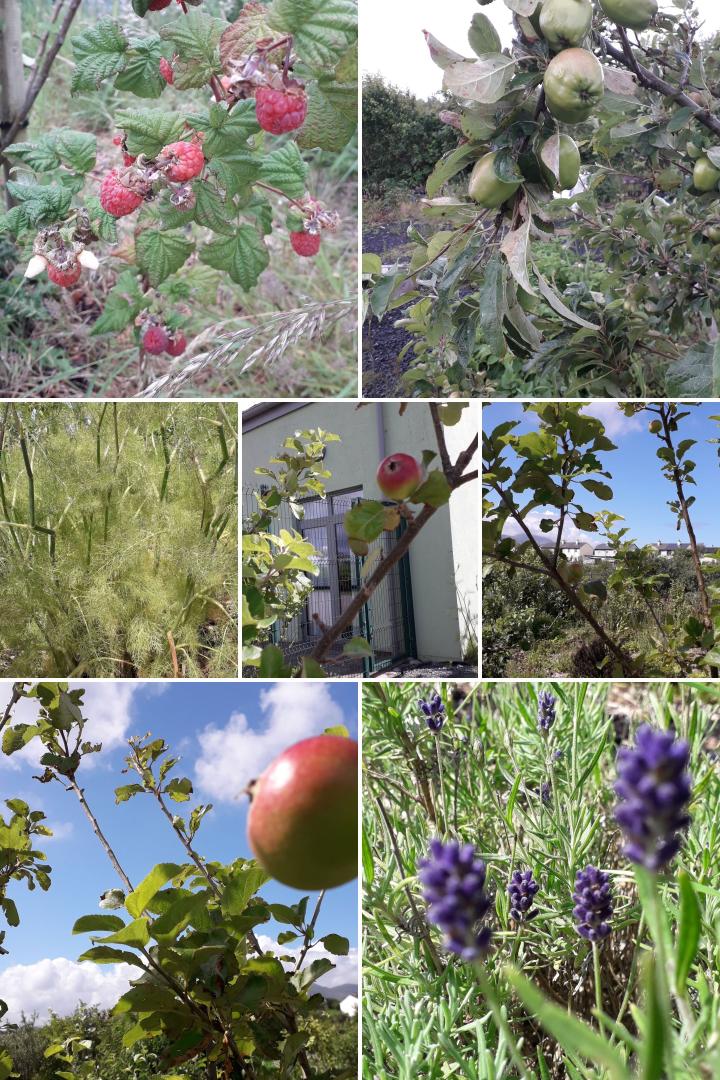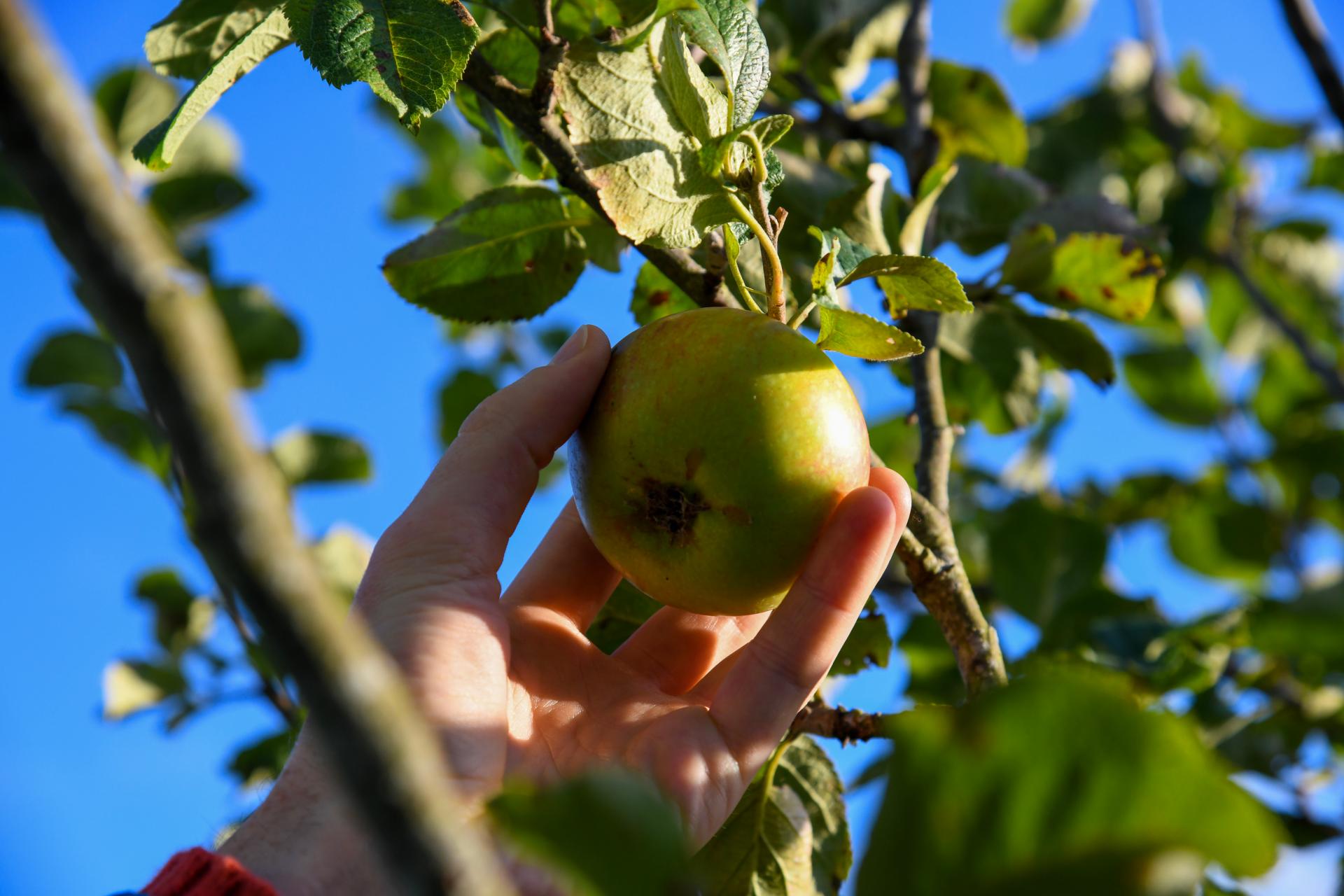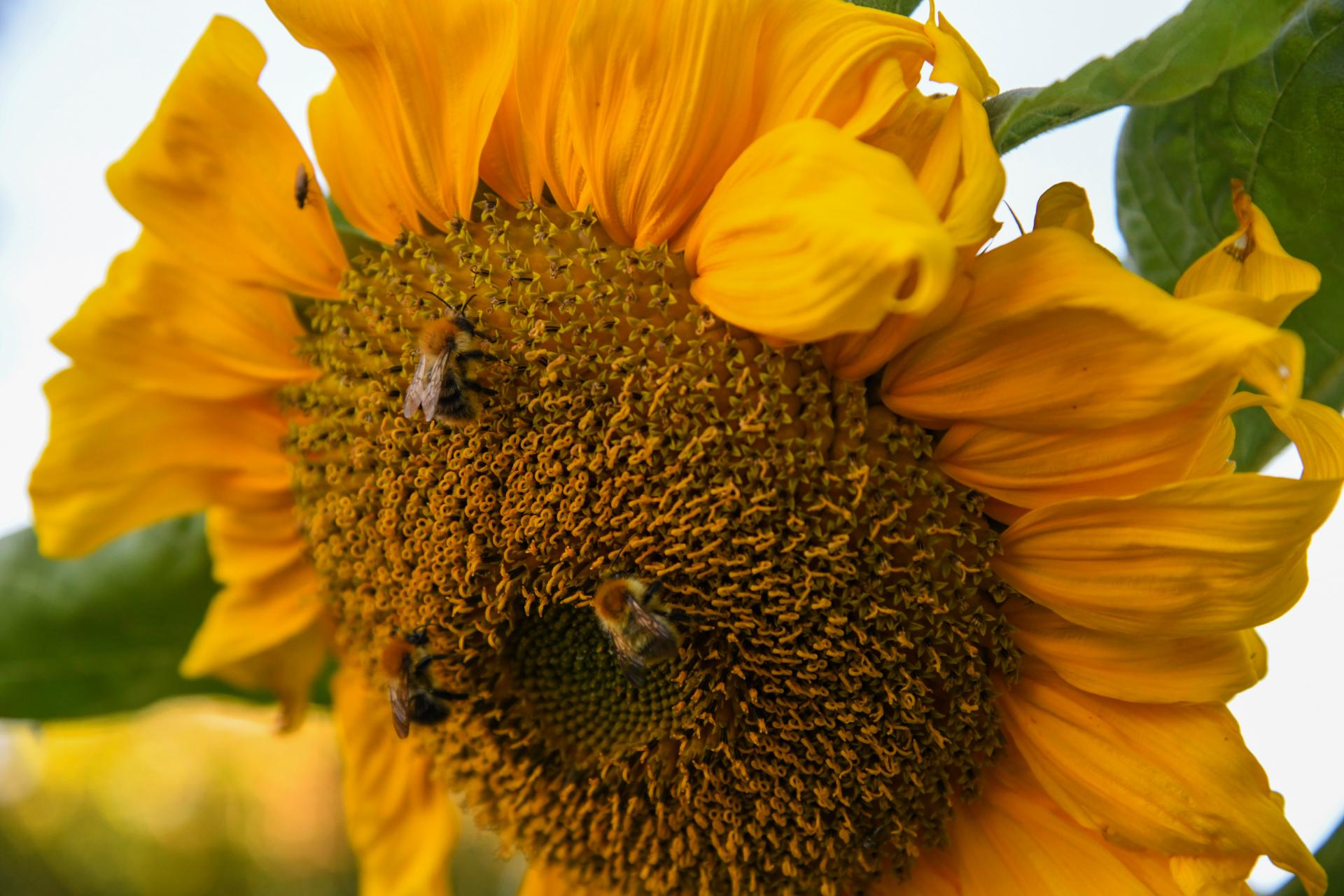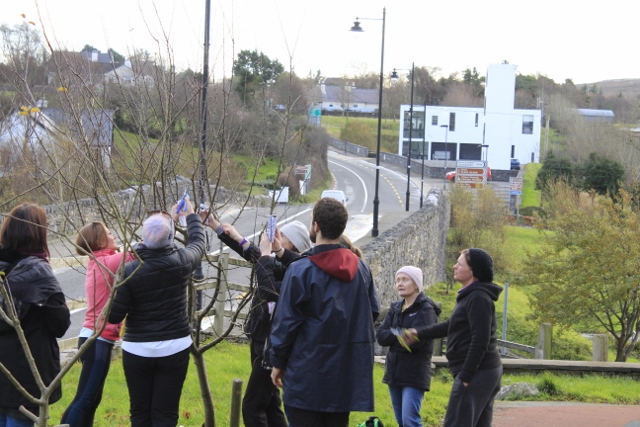Food Forests for the Future
Basic information
Project Title
Food Forests for the Future
Full project title
Edible Landscape Project CLG
Category
Reconnecting with nature
Project Description
The creation of edible landscapes to build place-based food security and community resilience to the negative impacts of climate change and ecosystem collapse. We call our initiative Food Forests for the Future.
Geographical Scope
Regional
Project Region
West and North-west regions, Ireland
Urban or rural issues
It addresses urban-rural linkages
Physical or other transformations
It refers to a physical transformation of the built environment (hard investment)
EU Programme or fund
No
Description of the project
Summary
The Edible Landscape Project (ELP) based in Westport Co Mayo, a social enterprise and a company limited by guarantee (CLG), has devised an outline for a novel and unique curriculum linked climate education programme - ELP’s Food Forests for Our Futures.
This initiative provides a unique opportunity to engage, educate, and empower school students to take a systems-based approach to closing material and energy loops when it comes to food and resource choices, and to simultaneously embed tangible, and positive, climate action at every stage of the process.
ELP provides resources to teachers to teach students about climate change, and specifically about the links between climate change and food. Five topics are covered and lesson plans for each topic are provided to teachers in an age appropriate manner. These resources are curriculum linked and the teacher can be assured that the children will be developing the skills as outlined for each age group but with the added advantage of the climate change lens.
ELP’s initiative allows participants to engage positively with climate change, lowering levels of climate anxiety – these have been growing steadily as media coverage around climate change has increased exponentially in 2021.
For our schools-based initiative all lessons are positively framed with proactive solution-based answers to each of the topics.
All lessons (described below) are centred around a 2m x 2m Food Forest, which is planted in the school garden and referred to constantly throughout the classes. A Food Forest is a mini ecosystem, providing students with a roadmap for developing interconnected ecosystems. This mimics the type of world we want our children to live in, where everything is connected and the connections between everything are understood and respected.
The Food Forests for Our Futures Program is being rolled out in schools and communities in the west of Ireland since November 2021.
This initiative provides a unique opportunity to engage, educate, and empower school students to take a systems-based approach to closing material and energy loops when it comes to food and resource choices, and to simultaneously embed tangible, and positive, climate action at every stage of the process.
ELP provides resources to teachers to teach students about climate change, and specifically about the links between climate change and food. Five topics are covered and lesson plans for each topic are provided to teachers in an age appropriate manner. These resources are curriculum linked and the teacher can be assured that the children will be developing the skills as outlined for each age group but with the added advantage of the climate change lens.
ELP’s initiative allows participants to engage positively with climate change, lowering levels of climate anxiety – these have been growing steadily as media coverage around climate change has increased exponentially in 2021.
For our schools-based initiative all lessons are positively framed with proactive solution-based answers to each of the topics.
All lessons (described below) are centred around a 2m x 2m Food Forest, which is planted in the school garden and referred to constantly throughout the classes. A Food Forest is a mini ecosystem, providing students with a roadmap for developing interconnected ecosystems. This mimics the type of world we want our children to live in, where everything is connected and the connections between everything are understood and respected.
The Food Forests for Our Futures Program is being rolled out in schools and communities in the west of Ireland since November 2021.
Key objectives for sustainability
The Edible Landscape Project is engaging with multiple stakeholders, on a multi-generational level to build food secure communities, increase climate resilience, encourage network bonds, and improve biodiversity through its innovative Food Forests for Our Futures initiative.
We have already demonstrated that the model works through our completed work with school age participants, at both primary and secondary level.
We have demonstrated that the systems thinking approach to sustainability and the inclusion of environmental, economic and social metrics have been met through the enhanced mental and physical wellbeing of participants, the increased level of knowledge gained, the future proofing of food networks, the awareness of climate challenges and opportunities, and the community bonding associated with food forest planning and planting.
We have already demonstrated that the model works through our completed work with school age participants, at both primary and secondary level.
We have demonstrated that the systems thinking approach to sustainability and the inclusion of environmental, economic and social metrics have been met through the enhanced mental and physical wellbeing of participants, the increased level of knowledge gained, the future proofing of food networks, the awareness of climate challenges and opportunities, and the community bonding associated with food forest planning and planting.
Key objectives for aesthetics and quality
The Edible Landscape Project is engaging with multiple stakeholders, on a multi-generational level to build food secure communities, increase climate resilience, encourage network bonds, and improve biodiversity through its innovative Food Forests for Our Futures initiatives.
Participants learn to have fun co-designing and co-creating food forests as they transform degraded school yards and other community areas to functional and beautiful productive green spaces. A food forest is a mini ecosystem, providing communities with a roadmap for developing interconnected ecosystems. This mimics the type of world we want our current and future generations to live in, where everything is connected and the connections between everything are understood and respected. This encourages value and experience based learning and integrates well-being and connection with nature at the heart of our everyday lives.
The Food Forests for Our Futures initiative is unique, both in an Irish, and European context.
At a high level, ELP’s Food Forests for Our Futures initiative addresses seven core principles in relation to food, by:
- Developing a Systems Thinking based approach to Food
- Closing energy and material Loops
- Engaging, educating and empowering individuals, communities and organizations to think and act in a collaborative way towards positive climate action
- Regenerating nature and enhancing biodiversity
- Eliminating waste - Improving access to nutritious food and improving human health
- Saving money and supporting local economies in helping to build more resilient communities
Participants learn to have fun co-designing and co-creating food forests as they transform degraded school yards and other community areas to functional and beautiful productive green spaces. A food forest is a mini ecosystem, providing communities with a roadmap for developing interconnected ecosystems. This mimics the type of world we want our current and future generations to live in, where everything is connected and the connections between everything are understood and respected. This encourages value and experience based learning and integrates well-being and connection with nature at the heart of our everyday lives.
The Food Forests for Our Futures initiative is unique, both in an Irish, and European context.
At a high level, ELP’s Food Forests for Our Futures initiative addresses seven core principles in relation to food, by:
- Developing a Systems Thinking based approach to Food
- Closing energy and material Loops
- Engaging, educating and empowering individuals, communities and organizations to think and act in a collaborative way towards positive climate action
- Regenerating nature and enhancing biodiversity
- Eliminating waste - Improving access to nutritious food and improving human health
- Saving money and supporting local economies in helping to build more resilient communities
Key objectives for inclusion
Every participant/student is included in the Food Forest for Our Futures experience regardless of their economic, ethnic or social backgrounds, or abilities. Plants and lessons are made available to all and are founded on principles of radical inclusion.
Schools in disadvantaged urban areas and remote rural areas are a particular focus of the program calls.
For schools, lesson plans are written and developed by qualified teachers and founded on principles of radical inclusion, whereby participants from any economic, ethnic, social background are equally encouraged, as our children of all abilities. For communities, a series of workshops are developed which are available to all, irrespective of skill and previous knowledge in the area.
Facilitators are trained in Equality, Diversity and Inclusion awareness, including in awareness of Unconscious Bias.
Schools in disadvantaged urban areas and remote rural areas are a particular focus of the program calls.
For schools, lesson plans are written and developed by qualified teachers and founded on principles of radical inclusion, whereby participants from any economic, ethnic, social background are equally encouraged, as our children of all abilities. For communities, a series of workshops are developed which are available to all, irrespective of skill and previous knowledge in the area.
Facilitators are trained in Equality, Diversity and Inclusion awareness, including in awareness of Unconscious Bias.
Results in relation to category
As part of our schools-based Food Forest for the Future Program we have developed the following metrics.
Demographic Engagement:
Young Gen Z – Age 5 to 18 years. Includes Primary and Secondary School Students. (ELP has plans to develop a Secondary School Climate Education Program in 2024)
• There are 3,300 Primary Schools throughout the island of Ireland
• There are 157 Primary Schools in Co. Mayo
• There are 723 Secondary Schools throughout the island of Ireland
• There are 157 Primary Schools in Co. Mayo
ELP estimates training 30 students per Primary School per Year in 2022.
As CEP Series 2 and 3 and the Irish Language series will be developed in 2024, number of students trained will increased to:
- 60 students per school per year in 2023
- 90 students per school per year in 2024 (estimate)
• Estimates that the entire Gen Z market segment accounts for $14bn - €29bn in direct spending, notwithstanding money spent on them by older generations.
• Gen Z constitutes 22.1% of the Irish population
The Irish language aspect of our Food Forest for the Future CEP is also an innovative aspect of the program and aligns with the overall European directives relating to the promotion of native languages. Given that Irish (Gaelic) is a recognized language of the European Parliament there are opportunities to take the learning outcomes from implementation of dual language (English/Irish) modules and expand to additional European languages.
Demographic Engagement:
Young Gen Z – Age 5 to 18 years. Includes Primary and Secondary School Students. (ELP has plans to develop a Secondary School Climate Education Program in 2024)
• There are 3,300 Primary Schools throughout the island of Ireland
• There are 157 Primary Schools in Co. Mayo
• There are 723 Secondary Schools throughout the island of Ireland
• There are 157 Primary Schools in Co. Mayo
ELP estimates training 30 students per Primary School per Year in 2022.
As CEP Series 2 and 3 and the Irish Language series will be developed in 2024, number of students trained will increased to:
- 60 students per school per year in 2023
- 90 students per school per year in 2024 (estimate)
• Estimates that the entire Gen Z market segment accounts for $14bn - €29bn in direct spending, notwithstanding money spent on them by older generations.
• Gen Z constitutes 22.1% of the Irish population
The Irish language aspect of our Food Forest for the Future CEP is also an innovative aspect of the program and aligns with the overall European directives relating to the promotion of native languages. Given that Irish (Gaelic) is a recognized language of the European Parliament there are opportunities to take the learning outcomes from implementation of dual language (English/Irish) modules and expand to additional European languages.
How Citizens benefit
ELP's solution integrates New European Bauhaus values of sustainability, inclusiveness and aesthetics through its novel Food Forests for the Future initiative.
As an example of the great work we have done to date we have developed a curriculum which is designed specifically for Irish primary schools - and easily adaptable to other European countries, climates and ecosystems – and which encourages more schoolchildren to grow and consume food in an environmentally sustainable, climate smart way. This template has already been rolled out to schools in the west of Ireland and we have an ambition to roll out the program nationally and internationally.
Additionally we have rolled out Food Forests for the Future to communities across the western seaboard and are in talks to advance to a national audience through engagement with local authorities and other governmental and non-governmental stakeholders.
As an example of the great work we have done to date we have developed a curriculum which is designed specifically for Irish primary schools - and easily adaptable to other European countries, climates and ecosystems – and which encourages more schoolchildren to grow and consume food in an environmentally sustainable, climate smart way. This template has already been rolled out to schools in the west of Ireland and we have an ambition to roll out the program nationally and internationally.
Additionally we have rolled out Food Forests for the Future to communities across the western seaboard and are in talks to advance to a national audience through engagement with local authorities and other governmental and non-governmental stakeholders.
Physical or other transformations
It refers to a physical transformation of the built environment (hard investment)
Innovative character
We believe in the right tree, in the right place, at the right time, for the right reason, and using the right resources, to achieve the optimum result.
In our case we are not only planting food forests but also building community networks, intergenerational knowledge, upskilling, building resilience, reversing biodiversity loss, providing the tools for current and future generations to thrive in a climate challenged future.
Our program is inter-generational, multi-generational, flexible, adaptable, adopts a systems-thinking approach, is a climate adaptation measure, is a climate mitigation measure, involves community team building, and is place-based (i.e. is adaptable to both an urban and rural setting). Lastly, it is scalable from 2m x 2m food forests in the urban built environment, to larger rural landscapes. The additional innovation embedded in the Food Forest for the Future program is that the finished result, i.e. the physical food forest is also an opportunity to build food tourism value through the labelling and identification of plants, sites etc. to inform visitors of the natural capital benefits. In so doing this also builds on that inter-generational and cross-cultural knowledge, where visitors/tourists/educators share knowledge about best practice and place-based innovations specific to their own geographic locations.
In our case we are not only planting food forests but also building community networks, intergenerational knowledge, upskilling, building resilience, reversing biodiversity loss, providing the tools for current and future generations to thrive in a climate challenged future.
Our program is inter-generational, multi-generational, flexible, adaptable, adopts a systems-thinking approach, is a climate adaptation measure, is a climate mitigation measure, involves community team building, and is place-based (i.e. is adaptable to both an urban and rural setting). Lastly, it is scalable from 2m x 2m food forests in the urban built environment, to larger rural landscapes. The additional innovation embedded in the Food Forest for the Future program is that the finished result, i.e. the physical food forest is also an opportunity to build food tourism value through the labelling and identification of plants, sites etc. to inform visitors of the natural capital benefits. In so doing this also builds on that inter-generational and cross-cultural knowledge, where visitors/tourists/educators share knowledge about best practice and place-based innovations specific to their own geographic locations.
Disciplines/knowledge reflected
We have engaged with community development experts, architects, designers, educators, and local authority representatives at different stages to advance our project through site identification, theory of change, requirements mapping, project planning, and project implementation.
Some examples include Trinity College Dublin, Department of Heritage and Rural Affairs, Local Authorities and Leader programs, as well as teacher representative bodies and third level institutions.
The overall methodology is firstly, engagement and consensus building, active listening, systems thinking, stakeholder engagement, resource mapping, and continuous feedback mechanisms. The 2nd stage is education, bringing constituencies along on the journey, and delivering applicable knowledge facilitate our third stage which is, empowerment, providing the tools for individuals, groups, and other stakeholders to take evidence-based decision making.
Some examples include Trinity College Dublin, Department of Heritage and Rural Affairs, Local Authorities and Leader programs, as well as teacher representative bodies and third level institutions.
The overall methodology is firstly, engagement and consensus building, active listening, systems thinking, stakeholder engagement, resource mapping, and continuous feedback mechanisms. The 2nd stage is education, bringing constituencies along on the journey, and delivering applicable knowledge facilitate our third stage which is, empowerment, providing the tools for individuals, groups, and other stakeholders to take evidence-based decision making.
Methodology used
ELP uses the Food Forests for Our Futures initiative to educate students and other program participants (communities, business etc.) about the inter-connectedness and circularity of our food systems and how, when we lose this connectedness, we negatively affect climate change.
• Helping students understand the circularity of the food system (soil health, resource management, waste elimination, healthy choices), thereby helping alleviate climate anxiety as well as teaching students how to engage positively with climate change
• Teaching systems-thinking to schoolchildren. This type of circular/ systems thinking is much sought after by educationalists today. A lack of this type of critical thinking is also one of the reasons why climate change has reached such critical levels
• Affecting changes in food growing, purchasing and food disposal habits
• Lowered carbon footprints
This is about joined up thinking, and the creation of edible landscapes throughout our built environment, where appropriate.
• Helping students understand the circularity of the food system (soil health, resource management, waste elimination, healthy choices), thereby helping alleviate climate anxiety as well as teaching students how to engage positively with climate change
• Teaching systems-thinking to schoolchildren. This type of circular/ systems thinking is much sought after by educationalists today. A lack of this type of critical thinking is also one of the reasons why climate change has reached such critical levels
• Affecting changes in food growing, purchasing and food disposal habits
• Lowered carbon footprints
This is about joined up thinking, and the creation of edible landscapes throughout our built environment, where appropriate.
How stakeholders are engaged
We have engaged with community development experts, architects, designers, educators, and local authority representatives at different stages to advance our project through site identification, theory of change, requirements mapping, project planning, and project implementation.
Some examples include Irish Government Departments such as the Department of Heritage and Rural Affairs, the Dept of Climate Change, Local Authorities and South West Mayo Leader programs, as well as teacher representative bodies (INTO -Irish National Teachers Organisation) and third level institutions.
Some examples include Irish Government Departments such as the Department of Heritage and Rural Affairs, the Dept of Climate Change, Local Authorities and South West Mayo Leader programs, as well as teacher representative bodies (INTO -Irish National Teachers Organisation) and third level institutions.
Global challenges
The ELP Food Forests for Our Futures addresses the following Sustainable Development Goals (SDGs)
SDG 2: Zero Hunger:
Showing groups how to grow their own food through our Climate Education Programs
SDG 3: Good Health & Well-being
Ensure healthy lives and promote well-being for all at all ages through understanding how to grow and consume food and bringing groups together to plant food forests in their schools and places of work as part of ELP’s Climate education Program
SDG 4: Quality Education
Ensure inclusive and equitable quality education regarding climate change and promote lifelong learning opportunities for all through ELP’s Food Forests for Our Futures Programs which is built into the Primary School syllabus in Ireland
SDG 11: Sustainable Cities & Communities
Ensures investment in the creation of green public spaces i.e. ELP planting community food forests, in a way that is both participatory and inclusive
SDG 12: Responsible Consumption & Production
Through ELP’s Education Programs - teaching groups to be responsible in their food purchasing habits by assessing food miles
SDG 13: Climate Action
By 2025 helping schools, communities and businesses throughout the island of Ireland to reduce their carbon footprint by showing them how to make climate smart food choices
SDG 15: Life on Land
Promoting sustainable land management practices through ELP’s Education Programs
SDG 17: Partnership for The Goals
ELP is engaged in building inclusive partnerships built upon principles and values, a shared vision, and shared goals that place people and the environment at the center.
SDG 2: Zero Hunger:
Showing groups how to grow their own food through our Climate Education Programs
SDG 3: Good Health & Well-being
Ensure healthy lives and promote well-being for all at all ages through understanding how to grow and consume food and bringing groups together to plant food forests in their schools and places of work as part of ELP’s Climate education Program
SDG 4: Quality Education
Ensure inclusive and equitable quality education regarding climate change and promote lifelong learning opportunities for all through ELP’s Food Forests for Our Futures Programs which is built into the Primary School syllabus in Ireland
SDG 11: Sustainable Cities & Communities
Ensures investment in the creation of green public spaces i.e. ELP planting community food forests, in a way that is both participatory and inclusive
SDG 12: Responsible Consumption & Production
Through ELP’s Education Programs - teaching groups to be responsible in their food purchasing habits by assessing food miles
SDG 13: Climate Action
By 2025 helping schools, communities and businesses throughout the island of Ireland to reduce their carbon footprint by showing them how to make climate smart food choices
SDG 15: Life on Land
Promoting sustainable land management practices through ELP’s Education Programs
SDG 17: Partnership for The Goals
ELP is engaged in building inclusive partnerships built upon principles and values, a shared vision, and shared goals that place people and the environment at the center.
Learning transferred to other parties
All aspects of the program are scalable, transferable, replicable, and can be contextualized based on the local limitations and/or constraints. For example, a food forest designed and planted in the west of Ireland may be different from one planted in the east of the country because of local conditions, geology, plant species, metereological conditions etc. This also goes for Food Forests for the Futures program potential across Europe where arid conditions in say Spain, will differ from wetter conditions in say Ireland, however the methodological approach is the same in terms of building local knowledge, enhancing local food security, and adaptation to local conditions.
Additionally
Additionally
Keywords
Engagement
Education
Empowerment
Resilience
Systems

